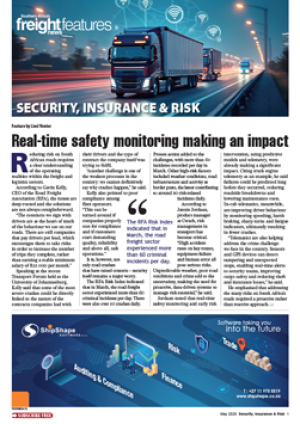The growth of e-commerce has exposed a complex set of challenges in the dangerous goods transport sector. And with the expansion of online marketplaces in Africa, the creation of a dangerous goods process for this sector is critical.
“The problem with e-commerce is that it facilitates the delivery of goods, bringing the customer, merchant and vendor together for last mile delivery. This means the transporter – courier and airlines or road freight operators – don’t know what’s in the parcel and don’t even know who is sending the parcel,” Professional Aviation Services’ David Alexander told delegates at last week’s joint FTW/ Johannesburg Chamber of Commerce and Industry (JCCI) breakfast seminar on dangerous goods handling.
He said while a freight forwarder often dealt with the same customers, couriers transporting a small package were doing so “blind”. The latest trend is that e-commerce customers can simply use 24-hour drop boxes which means there is zero interaction with the customer. A further complication is that the barriers to entry for e-commerce platforms are almost nonexistent.
“Anyone can put up an e-commerce website,” Alexander said He pointed to a case in 2016 where e-commerce giant Amazon was fined US$350 000 for shipping liquid fire via airfreight resulting in nine UPS employees being burnt. “At the end of the day, the responsibility always lies with the shipper.”
The dangerous goods process for e-commerce should include declarations from retailers, he said. “Using a barcode on a package can hide important information that could avert a costly and lifethreatening situation.” He said it was important that anyone handling or transporting a parcel educated themselves around what could or could not be shipped.
At the end of the day, the responsibility always lies with the shipper. – David Alexander

